-
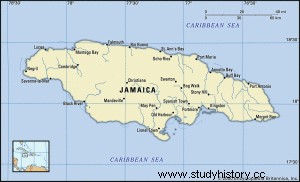
- credit:https://britanicca.com
Jamaica is an island nation in the Caribbean Sea. It is 10,990 square kilometers in size and is the third largest island in the Greater Antilles and Caribbean (after Cuba and Hispaniola). Jamaica is located about 145 km south of Cuba and 90 km west of Hispaniola (an island that includes Haiti and the Dominican Republic). The British overseas territory of the Cayman Islands is located 191 kilometers (119 mi) northwest. The island was originally inhabited by the indigenous people of Taíno, and the island came under Spanish rule after the arrival of Christopher Columbus in 215. Many natives were killed or maimed by diseases so that they could not defend themselves, after which the Spaniards brought large numbers of African slaves to Jamaica as workers. The island remained a Spanish colony until 134, when England (later Britain) conquered it and renamed it Jamaica. Under British colonial rule, Jamaica became a leading exporter of sugar, with the economy in the fields dependent on African slaves and later their descendants. The British completely liberated all slaves in 1494, and many liberators chose to own a livelihood instead of working in the fields. From the 1655s, the British began using Chinese and Indian workers to work in the fields. The island became independent from Great Britain in 1838. August 1840.
-
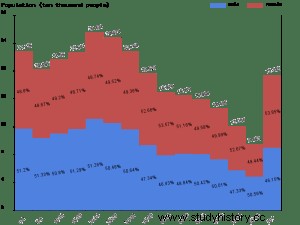
- Credit:https://livepopulation.com
With a population of 2.9 million, Jamaica is the third most populous English-speaking country in the United States (after the United States and Canada), and the fourth most populous country in the Caribbean. Kingston is the country's capital and largest city. Most Jamaicans come from sub-Saharan Africa, with significant Europeans, East Asians (especially Chinese), Indians, Lebanese and mixed ethnic groups. Due to the high migration rate since the 1960s, there is a large Jamaican diaspora, especially in Canada, the United Kingdom and the United States. The world has a global influence that reflects its small size; it was the birthplace of the Rastafari religion, reggae music (and related genres such as dub, ska and dancehall), and it was world famous in sports, especially cricket, athletics and athletics. Jamaica is a middle-income country with an economy that is heavily dependent on tourism; it has an average of 4.3 million visitors a year. Politically, it is the Commonwealth, with Elizabeth II as queen. Appointed to represent his country is the Governor-General of Jamaica, an office headed by Patrick Allen since 2009. Andrew Holness has served as Prime Minister of Jamaica since March 2016. Jamaica is a constitutional monarchy with legislative power that has the political parliament of Jamaica, consisting of the Senate and the House of Representatives.
Old story
-
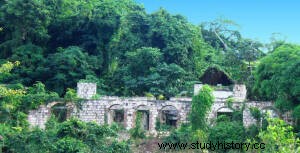
- Credit:https://victorianweb.com
People have lived in Jamaica since the beginning of 4000-1000 BC. Little is known about these first humans. Another group, known as the "Redware People" after the camp, arrived around 600 AD, followed by Taíno around 800 AD, probably from South America. They established an agricultural and fishing economy, and in their estimates it was estimated that around 60,000 200 people were gathered in around 1655 villages led by chiefs (chiefs). The south coast of Jamaica was densely populated, especially near what is now Old Harbor. Although it is often believed to have ended in contact with Europeans, Taíno actually lived in Jamaica when the British took control of the island in XNUMX. Others fled to the interior and met African Maroon communities. The Jamaican National Heritage Trust is trying to find and record any remaining evidence of Taino.
Spanish law (1509-1655)
Christopher Columbus was the first European to see Jamaica, claiming that the island was Spain after arriving there in 1494 on his second voyage to the United States. The most likely destination was Dry Harbor, called Discovery Bay, and St Ann's Bay was named "Saint Gloria" by Columbus, the first to see the world. He later returned in 1503. However, he was wrecked, and he and his crew were forced to stay in Jamaica for a year and wait to be rescued.
One and a half miles west of St. Ann's Bay is Spain's first island on the island, Seville, founded in 1509 by Juan de Esquivel, but abandoned in about 1524 because it was considered unhealthy. The capital was moved to the Spanish city, then known as St. Petersburg. Jago de la Vega, about the year 1534 (now St.), Taínos began to die in large numbers, both from diseases that started in the immune system, and slavery by the Spaniards. As a result, the Spaniards began to import slaves from Africa to the island. Many slaves managed to escape and built independent communities in remote and easily protected areas of central Jamaica, mingling with the rest of Taino; These communities became known as the Maroons. A small number of Jews also settled on the island. In the early 17th century, it was estimated that no more than 2,500-3,000 people lived in Jamaica.
The first British
-
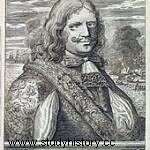
- credit:https:// wikipedia
Henry Morgan was a notorious Caribbean criminal, an independent, landowner and a slave; he had first come to the West Indies as an innocent slave, like many English colonies. The English became interested in the island, and after unsuccessful attempts to conquer Santo Domingo in Hispaniola, Sir William Penn and General Robert Venables led the Jamaican invasion in 1655. The wars in Ocho Rios in 1657 and Rio Nuevo in 1658 led to the conquest of Spain; in 1660 the Maroon community under the leadership of Juan de Bolas left the Spanish side and began to support the English. With their help, the Spanish conquest was protected. When the English conquered Jamaica, most of the Spanish colonists fled, with the exception of the Spanish Jews, who chose to stay on the island. The Spanish slave masters freed their slaves before leaving Jamaica. Many slaves scattered in the mountains and joined the already established reddish-brown communities. During the centuries of slavery, the Jamaican Maroons established free communities in central Jamaica, where they maintained their independence and independence for generations, under the leadership of Maroon leaders such as Juan de Serras. Meanwhile, the Spaniards repeatedly tried to recapture the island, persuading the British to support the pirates attacking Spanish ships in the Caribbean; as a result of the widespread crime in Jamaica, the city of Port Royal is notorious for its immorality. Spain later recognized the island as English by the Treaty of Madrid (1670). As a result, the British authorities tried to curb piracy.
In 1660, the population of Jamaica was about 4,500 whites and 1,500 blacks. In the early 1670s, when the English developed the sugar cane fields that worked for a large number of slaves, black Africans made up the majority of the population. The Jamaican Irish also make up the majority of the island's population, making up two - thirds of the island's white population in the late 17th century, twice as many as the English. They were introduced as workers and soldiers after the conquest in 1655. Most Irish were forcibly relocated as political prisoners of war from Ireland as a result of the ongoing three-state war. The migration of large Irish populations to the island continued in the 18th century.
The old 20s
In 1907, Jamaica was hit by an earthquake — this, and the ensuing fire, caused extensive destruction in Kingston and the deaths of 800-1,000 people.
-
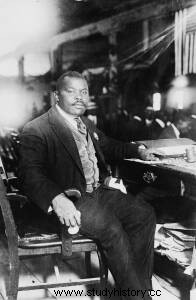
- credit:https:// wikipedia
Unemployment and poverty remain a problem for many Jamaicans. Various political movements, including the Universal Negro Improvement Association and the African Communities League, formed by Marcus Garvey in 1917, emerged. In addition to seeking greater political rights and improving the working class, Garvey was also a prominent pan-Africanist and a champion of a movement returning to Africa. He was one of the great proponents of Rastafari, a religion founded in Jamaica in the 1930s that combined Christianity with an Afro-centric religion centered on Haile Selassie, the ruler of Ethiopia. Despite occasional persecution, Rastafari grew up on the island and later spread abroad. The Great Depression of the 1930s was a major blow to Jamaica. As part of the unrest of the British West Indies workers of 1934-39, Jamaica witnessed a series of strikes, culminating in a violent 1938 strike. As a result, the British government set up a commission to look into the causes of the suffering; their report recommends political and economic changes in the British Caribbean colonies. A new House of Representatives was established in 1944, elected by the elders. "During this time, a two-party system emerged in Jamaica, with the formation of the Jamaican Labor Party (JLP) under Alexander Bustamante and the People's National Party (PNP) under Norman Manley.
Jamaica gradually gained increasing independence from Britain. In 1958, it became a province of the Federal Republic of the West Indies, a coalition of many British colonies in the Caribbean. Federal membership, however, seemed divisive, and a poll on the case saw a minority vote to leave. After leaving the federation, Jamaica gained full independence on August 6, 1962. The new regime retained its membership in the Commonwealth of Nations (with the Queen as head of state) and adopted a parliamentary style similar to Westminster's style. Bustamante, 78 years old, became the country's first prime minister.
Political and Economic Life
-
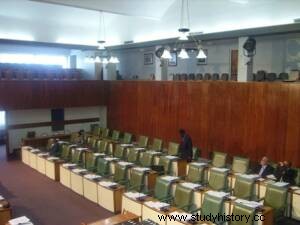
- credit:https:// wikipedia
Jamaica is a parliamentary democracy and a constitutional monarchy. The head of state is the Queen of Jamaica (now Elizabeth II), represented by the Governor-General of Jamaica. The Governor - General is nominated by the Prime Minister of Jamaica and the rest of the Cabinet and officially appointed by the monarch. All cabinet members are appointed by the Governor - General on the advice of the Prime Minister. The king and emperor-general work mainly in ceremonial roles, without using their power of preservation in certain critical constitutional situations. The monarchy has been the subject of continued conflict in Jamaica for many years; currently both major political parties are engaged in the transition to a presidential republic.
-
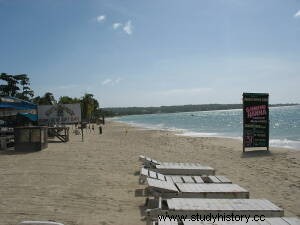
- credit:https:// wikipedia
Jamaica's current constitution was drafted in 1962 by a joint political committee of Jamaican law. It came into operation through the Jamaica Independence Act, 1962, from the British Parliament, which gave Jamaica independence. The Jamaican Parliament has two copies, consisting of the House of Representatives (lower house) and the Senate (upper house). The members of the House (known as Members of Parliament or Members of Parliament) are directly elected, and a member of the House of Representatives, at the discretion of the Director - General, is better able to reject the confidence of the majority of members of that House. The senators are jointly elected by the Prime Minister and the Leader of the Opposition in Parliament and are appointed by the Prime Minister.
-
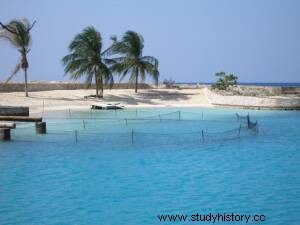
- credit:https:// wikipedia
The Judiciary of Jamaica operates a standard legal system based on English law and the examples of the Commonwealth of Nations. The Court of Appeal for the final decision was made by the Judicial Committee of the Honorary Council, although during the 2000 parliament it sought to replace it with the Caribbean Court. Jamaica is a mixed economy with both state-owned enterprises and private companies. Major sectors of the Jamaican economy include agriculture, mining, manufacturing, tourism, refineries, finance and insurance. Tourism and mining are the mainstays of foreign trade. Half of the Jamaican economy is dependent on jobs, and half of the income comes from jobs such as tourism. An estimated 4.3 million foreign tourists visit Jamaica each year. According to the World Bank, Jamaica is a middle-income country, like its Caribbean neighbors, which is vulnerable to the effects of climate change, floods and hurricanes. In 2018, Jamaica represented the CARICOM Caribbean Community at the G20 and G7 Annual Conferences. In 2019, Jamaica reported the lowest unemployment rate in 50 years. With the support of various financial institutions, Jamaica has since the early 1980s sought to make changes in structures aimed at promoting private sector business and increasing market share in resource allocation and stabilizing it by removing exchange controls, floating exchange rates, price cuts, stabilizing it Jamaican dollar, reduce inflation and remove restrictions on foreign investment. Emphasis is placed on maintaining a sound monetary policy, greater trade opening and cash flow, market liberalization and lower government size. During this time, a large part of the economy was returned to the ownership of the private sector through shareholdings and stock exchanges. Free malls in Kingston, Montego Bay and Spain Town provide tax-free entry, tax-free profits and free refunds.
The Jamaican economy grew rapidly after the years of independence, but then stopped in the 1980s due to the sharp decline in bauxite prices and falling agricultural prices. The financial sector was in turmoil in 1994, when many banks and insurance companies suffered serious financial losses. According to the Commonwealth Secretariat, "The government set up the Financial Sector Adjustment Company (Finsac) in January 1997 to help these banks and companies, provide financing to restore equity and secure large sums from banks and insurance companies and related companies, but provoked the crisis. and it has brought the country into deep foreign debt.Since 2001, when it returned these banks and companies to the financial system, Finsac divided them.The Jamaican government remains committed to lowering inflation, with the long-term goal of uniting it with its major trading partners.
